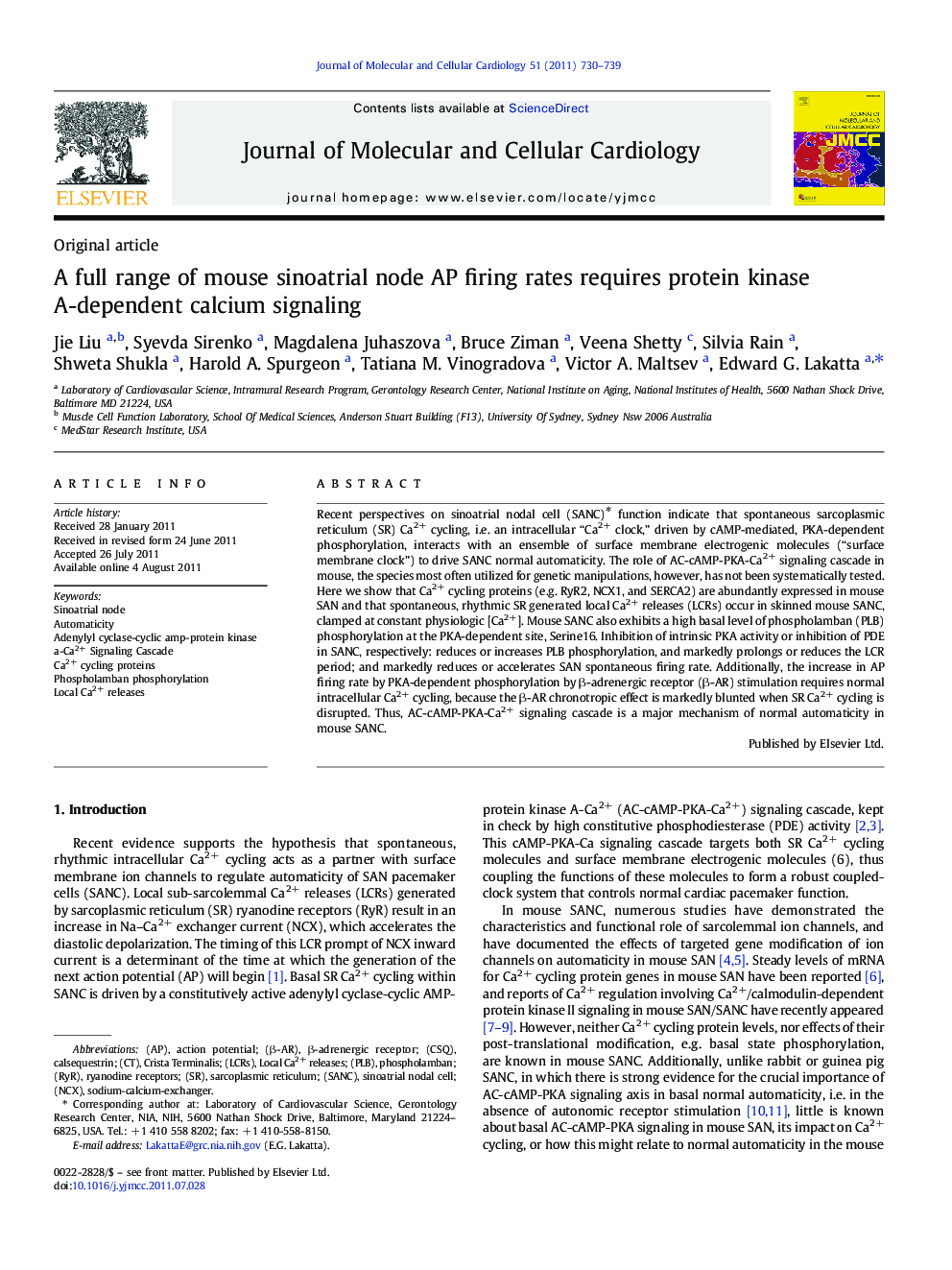| کد مقاله | کد نشریه | سال انتشار | مقاله انگلیسی | نسخه تمام متن |
|---|---|---|---|---|
| 2190747 | 1097817 | 2011 | 10 صفحه PDF | دانلود رایگان |

Recent perspectives on sinoatrial nodal cell (SANC)⁎ function indicate that spontaneous sarcoplasmic reticulum (SR) Ca2+ cycling, i.e. an intracellular “Ca2+ clock,” driven by cAMP-mediated, PKA-dependent phosphorylation, interacts with an ensemble of surface membrane electrogenic molecules (“surface membrane clock”) to drive SANC normal automaticity. The role of AC-cAMP-PKA-Ca2+ signaling cascade in mouse, the species most often utilized for genetic manipulations, however, has not been systematically tested. Here we show that Ca2+ cycling proteins (e.g. RyR2, NCX1, and SERCA2) are abundantly expressed in mouse SAN and that spontaneous, rhythmic SR generated local Ca2+ releases (LCRs) occur in skinned mouse SANC, clamped at constant physiologic [Ca2+]. Mouse SANC also exhibits a high basal level of phospholamban (PLB) phosphorylation at the PKA-dependent site, Serine16. Inhibition of intrinsic PKA activity or inhibition of PDE in SANC, respectively: reduces or increases PLB phosphorylation, and markedly prolongs or reduces the LCR period; and markedly reduces or accelerates SAN spontaneous firing rate. Additionally, the increase in AP firing rate by PKA-dependent phosphorylation by β-adrenergic receptor (β-AR) stimulation requires normal intracellular Ca2+ cycling, because the β-AR chronotropic effect is markedly blunted when SR Ca2+ cycling is disrupted. Thus, AC-cAMP-PKA-Ca2+ signaling cascade is a major mechanism of normal automaticity in mouse SANC.
► A full range of mouse sinoatrial node AP firing rates requires protein kinase a-dependent calcium signaling.
► PKA signaling drives basal pacemaker function in mouse sinoatrial node.
► PKA-dependent rhythmic spontaneous Ca2+ cycling drives mouse heart pacemakers.
► Ca2+ oscillations generate normal automaticity in mouse sinoatrial node cells.
Journal: Journal of Molecular and Cellular Cardiology - Volume 51, Issue 5, November 2011, Pages 730–739